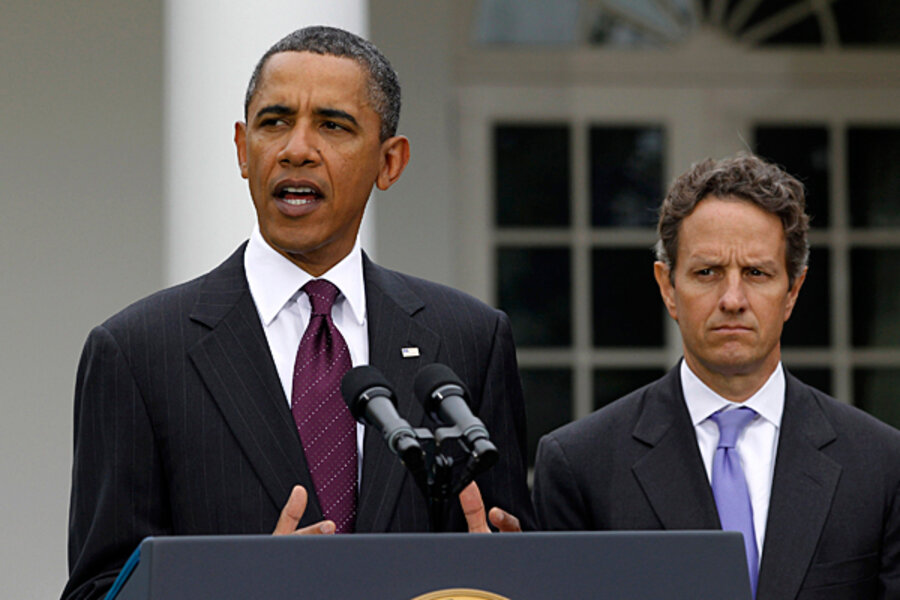Why 100,000 jobs a month won't lower unemployment rate
Loading...
Stock investors cheered Friday because the latest monthly jobs report wasn't terrible. But the big issue remains: Even if you set aside the temporary impact of downsizing at the Census Bureau, the economy isn't generating nearly enough new jobs to bring down the US unemployment rate.
Here's the problem. August marked the eighth straight month of job gains in the the private sector – a welcome pattern that President Obama was quick to highlight. Yet those gains average less than 100,000 per month. That's not enough to improve the job market, economists say.
How's that? Well, if the whole economy, including government, ticked along at a pace of 100,000 job gains per month, it wouldn't be fast enough to account for natural demographic growth in the labor force. A rising population means about that many new people should be entering the workforce each month.
So a modest pace of 100,000 jobs a month is certainly better than declines, but it doesn't begin to fill America's jobs hole.
In fact, unemployment could actually rise more. On Friday, the Labor Department said the jobless rate edged up to 9.6 percent in August, from 9.5 percent in July. The disappearance of Census jobs outweighed a gain of 67,000 new jobs in the private sector.
What lies ahead
Of course, just because the private sector has averaged about 95,000 jobs a month this year doesn't mean that trend will continue. Some forecasters worry that things will get worse later this year. The job market hasn't been as strong in the summer as it was in the spring. Others expect job numbers to pick up as the economy gets beyond what they call a recent "soft patch" or "pause."
But few economists are predicting a speedy fall in the unemployment rate. The consensus among roughly 50 forecasters surveyed by Blue Chip Economic Indicators is that the jobless rate will be 9.5 percent during the final quarter of 2010 and recede to 8.8 percent by the final quarter of 2011.
The current unemployment rate reflects some 15 million people who are officially unemployed, without a job and actively seeking work. Another 2.4 million are "marginally attached" to the labor force, in many cases people who want to work but have grown discouraged with the job search. Nearly 9 million are employed part-time because they can't find work opportunities with longer hours. (For context, the total US labor force includes 154 million people.)
This economic challenge is the central issue on the minds of voters, and so it is a pivotal issue for the White House and congressional leaders. The Obama administration says the president plans to unveil more job-creation proposals next week.
How to fix the problem
Neither politicians in Congress nor economists in the private sector agree on precisely what steps would help the job market most. And the election season complicates any quest for bipartisan agreement. But many economists say that some new tax cuts, perhaps including incentives directly targeted at job creation, should be considered.
Friday's job numbers showed a rise in unemployment and a loss of 54,000 jobs in the overall economy due to the loss of Census employment. But some of the trends within the report helped to reassure investors that the economy doesn't appear headed into recession this fall.
The average hourly earnings of workers rose by 0.3 percent, to $22.66. The average number of hours worked stayed steady at 34.2 hours per week. And although unemployment edged up, the number of people who have been unemployed for 27 weeks or longer fell. Some 42 percent of unemployed Americans fall in that category, down from 45 percent a month earlier.





